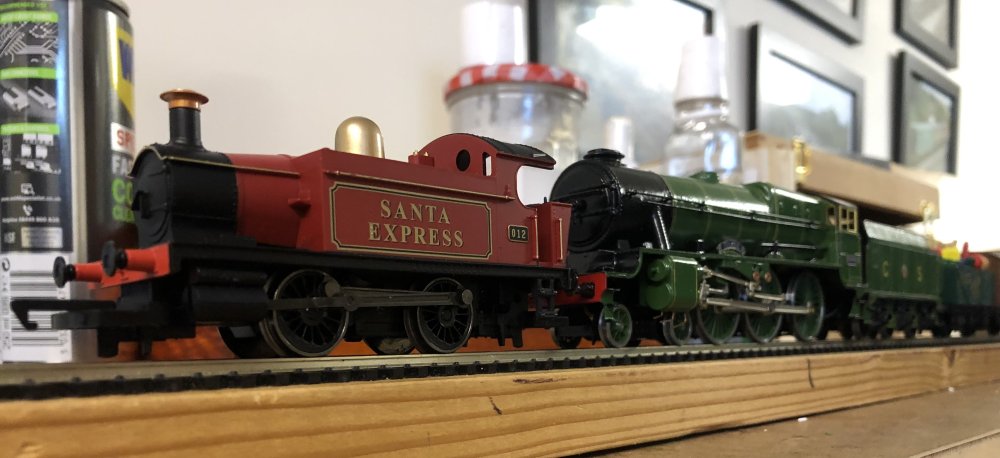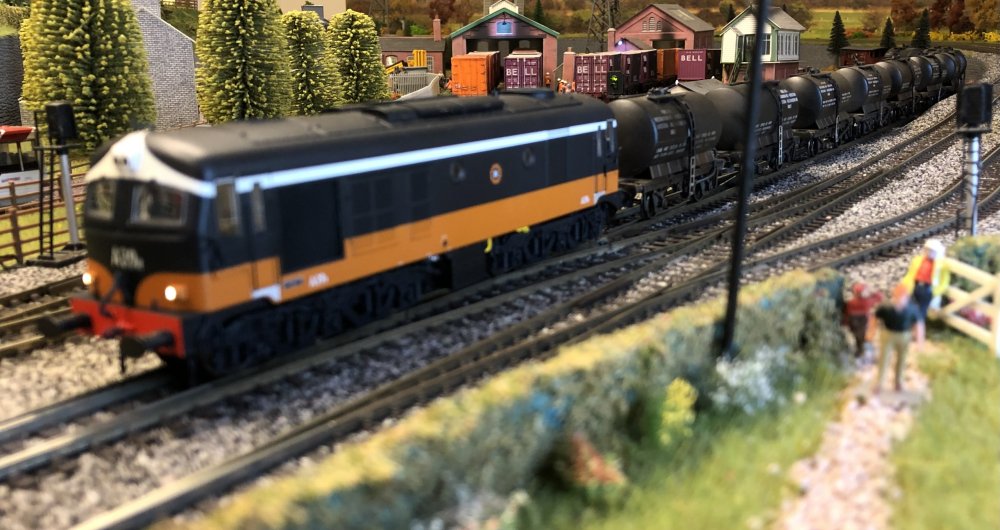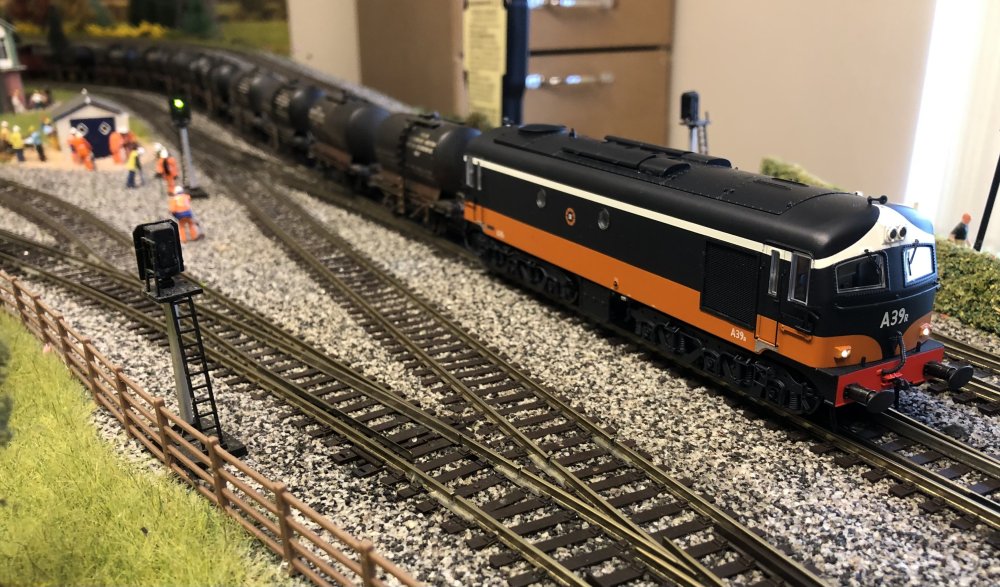-
Posts
15,859 -
Joined
-
Last visited
-
Days Won
393
Content Type
Profiles
Forums
Events
Gallery
Everything posted by jhb171achill
-
Light years from reality, I think....... just finished reading the whole thing in detail - I'd have been better informed about the REALITIES of future rail freight if I had read the Beano!
-
Sorry to be the spoiler. This report and all that is in it, and all of what little behind it constitutes any sort of thinking beyond the plot of a novel, is utter drivel from start to finish, It is contrived by overpaid consultants to please other overpaid consultants, and contains not a jot of anything that is not either (a) blatantly obvious, (b) utter fantasy or (c) irrelevant. Every word of this document consist of NOTHING but inane buzzwords and ZERO detail, let alone any sort of commitment beyond a "Dear Santa" list of pipe dreams. "Reconnect the port of Foynes", it says. Apart from this being old news, re-heated and trotted out by successive local gombeen men and politicians with no knowledge of railway operation, WHEN to reopen the port? How? How much will it cost? Who will do the work? When will it start? It will "drive growth"... blah blah. How? By what measurement? According to what research? With evidence of what proposed inward traffic? "Support opportunities with mining and offshore power generation in the region..." What planet are these people on? Mining is supposed to be nasty to the environment. Are the Greens going to support a mine so that when its worked out they can put a cycleway in it? Support offshore power? How exactly does a land-based railway do that? Do they put all the wind power in boxes and manhandle them into "H" vans at Foynes, for onward distribution to Fiddown, Buttevant and Bangor West? WHAT power generation? According to what research results can the resurgence of the Foynes branch be deemed to link up with offshore wind power? Are they going to electrify it? Marino Port - reconnection. Apart from the obvious question of why they ever disconnected it, when will this happen, how, at what cost, and for what traffic? And so it goes. I hear that consultancy report writing pays well.... To produce coloured tables of IE's management structure - who's paying for that, and for what purpose? One new goods train - one. With 18 little wagons, which operates a couple of times a week. Big deal. See how impressed the Swiss or Americans might be when reading that. Yes, I know we're not the USA, and we haven't colossal volumes of Pennsylvania coal to move thousands of miles - but that's not the point. Even little Brexitland, a minnow by mainland European or North American standards, doesn't need to produce something like War & Peace to herald this. 100 new goods services? What happened the recent announcements and diagrams by colossally-paid consultants about a new freight terminal at Rosslare (with a nice picture showing it at the far end of the car park)? According to THIS one, Rosslare doesn't feature - but Athenry does! Gawd save us. "B Ogle", and for that matter, the tooth fairy, speak more sense than this. Mr Meade should be well aware now that there is no appetite at government level, even with that wee lad Ryan making Leo Martin-Varadcar's tea, for investment in rail freight. Even if IE genuinely wanted to make a case for it, and the signs over the last 25 years have tended to be to the contrary most of the time, I suspect it would fall on deaf ears. Let's be generous, though, to these over-fed consultants and whatever poor fool hired them. Say there ARE genuine plans for 100 new freight flows. It's reasonable to assume most or all will be containerised. Let's assume that a serious attempt is made to have 25 or 30 wagon trains. We currently have three freight flows (yippee!). So that leaves 97. Let's say that they mean 97 single trips, thus counting one "freight flow" as a single trip only; that makes about 49 return trips. Let's say that each has two sets of wagons, one being loaded while the other is laden. Plus a few spares. That's going to equate to several thousand wagons. OK, I hear you say, maybe one set will be used on many of these traffic flows; maybe some will be one train a fortnight. With 12 wagons. I wouldn't open a paper bag to read about that, never mind a glossy report. And what of locomotives and crews? If the driver of the Waterford - Limerick junction railcar is off ill, they cancel the train. One driver on that route! Where are all these people coming from? Where will they get the locomotives? Forgive my cynicism, but that report is sadly not worth the paper it's written on; it is pure Harry Potter stuff. Rant over - for now.
-
Brookhall Mill - A GNR(I) Micro Layout
jhb171achill replied to Patrick Davey's topic in Irish Model Layouts
I’m sure animal cruelty organisations scuppered that plan! -
Brookhall Mill - A GNR(I) Micro Layout
jhb171achill replied to Patrick Davey's topic in Irish Model Layouts
The heating in those things wasn't the best. From memory, they could be draughty. Today's railcars (especially ICRs) are the opposite - sealed pressure cookers with the heat turned up WAAAAY too high. -
yes, exactly.
-
The station where you see the train arriving at 7:48 is Western Road terminus, Cork. It is now the site of a hotel, but the abutments of the bridge it passes over just before are still to be seen.
-
There were actually at least three variants of end detailing on those vans, that I can think of. Also at least three types of doors - you've depicted two of them nicely!
-
I think that we can only plan things now - I'm currently planning a holiday for some friends here, for next June. They live in the States. I just told them to check out getting holiday cancellation insurance, just as I would if I was planning to go to America. So for model exhibitions, I think it's sensible to plan them as normal - but have a plan "B"!
-
-
I don't have the dimensions, Patrick, but I am just adding that I have a Parkside palvan myself, and I have to say that it is so undersized that I don't run it - yes, there's a significant difference - the British one just doesn't look right on an Irish layout to me.
-
Yes!! I told ye - they won’t order American ones…..
-
Can’t see them buying American ones. Sure it would cost a fortune to ship them here, and they’d be too heavy for a ship anyway….
-
Also in 1961, a local mill has entered into a contract with Brookhall Mill, near Lisburn. This will involve regular transfers of rolls of linen between the two. Brookhall's linen is among the finest in the world, and here in Dugort the local textile factory is making high end Irish Linen tablecloths and tourist goods for sale in Blarney castle, Parknasilla Hotel and tourist shops in Killarney. Here, we see the first three vans received from Lisburn being shunted into the goods platform. As one might expect, a mix of one CIE "H" van and two ex-GNR vans, hauled by a UTA "Jeep" to Dundalk, A12 to Dublin, B105 to Cork, and A42 to Dugort harbour. It's just a shunting layout at the moment, but with the assistance of some good cronies, it will be hopefully extended in the new year.
-
It's 1961, and the branch "C" class has failed (again). Well, C202 failed the week before, C221 the week before that, and C230 the week before that. The normal branch loco, a J15, is off on beet duties, being late November an'all, while the other J15 is having its boiler washout. So the branch mixed has superpower today - just out of Inchicore since being repainted out of the filthy silver, but before Mr. Crossley's contraption covers its new green paint with a layer of sludge. There's a fitter on the way to fix the front handrail.
-
It's been fixed since!
-
No. 800 poses with a GSR “Santa” train. Authenticity assured. She’s getting assistance from Santa’s private locomotive, as those two troublesome trucks are too…. troublesome. …. A39R en route to Foynes, and a J15 with empty cattle wagons for Baltinglass Fair. IMG_0983.MOV
-
I could have seen them struggle on with hiring stock and diesel locos in from CIE & the UTA in Enniskillen, as they were already doing that with carriages on busy days. Fast forward to EU days and they get grants to get a couple of 2-car 2600 sets. And IE operate their timber trains from Manorhamilton…
-
Last time I got anything from him I wrote to him, and got the relevant stuff promptly.
-
They look superb! GREAT to have yet another addition to the range of real Irish wagons. Prototypes like that lasted a lot longer than many realise - there were still short-wheelbase vans and even old curved-roof "soft-tops" in use in far-flung places like Wisht Caarrk up until abut 1960. So a "C" class at the very least, but probably an "A" as well, would have hauled them in amongst more modern ones during the "grey & green" era. The last of this type of vehicle would have died with the end of steam, or probably just before it, and before the black / black'n'tan liveries appeared - but who knows, possibly a VERY late survivor? If or when these go into production, I'll be looking for some for sure!
.png.c363cdf5c3fb7955cd92a55eb6dbbae0.png)





.thumb.jpg.3836b5b60729d8cc8e40427eb5e2291a.jpg)





